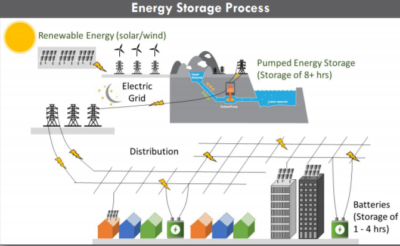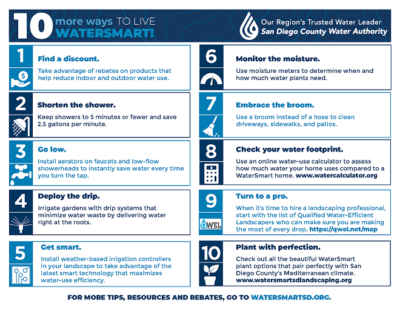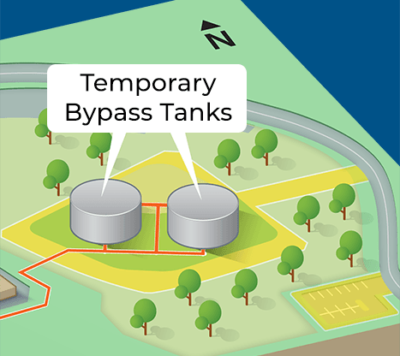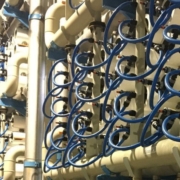San Diego County Water Authority this week issued a formal Request for Proposals seeking a full-service private partner capable of developing a large-scale pumped energy storage project planned jointly by the Water Authority and the City of San Diego. Proposals are due by 2 p.m. Nov. 3, and details such as how to file are included in the RFP document at www.sdcwa.org/contracting-opportunities.
Request for Proposals
The partner agencies aim to maximize the value of the existing San Vicente Reservoir for on-demand energy generation to support the state’s clean energy goals. The Water Authority and the City of San Diego are seeking a full-service, multidisciplinary team capable of delivering and operating the project. The scope of work is divided into two phases: Phase 1 Preliminary Work and Phase 2 Implementation Work. The RFP details the scope of work required for development and deployment of the project, including a financial plan.
“This is an exciting project that meets multiple goals for the San Diego region, including protection from blackouts and supporting climate-friendly energy sources,” said Gary Bousquet, director of engineering for the Water Authority. “We are committed to finding a private partner who can help move this from concept to completion.”
State funds for San Vicente Energy Storage Facility
In July 2021, the San Vicente Energy Storage Facility received $18 million in the state budget, enough to advance it through initial design, environmental reviews, and the federal licensing process. The San Vicente project is one of the most promising pumped energy storage solutions in California and it would be a major asset to help avoid rolling blackouts through on-demand energy production while helping to meet state climate goals. It also could mitigate costs for water ratepayers across the San Diego region by generating additional revenue to help offset the cost of water purchases, storage, and treatment. The City and the Water Authority are developing the project together, just like they did to raise the height of the city-owned San Vicente Dam 117 feet in the 2010s.
“The San Vicente Energy Storage Facility is an important project for San Diego,” said Juan Guerreiro, executive assistant director of the City of San Diego’s Public Utilities Department. “It will improve our energy security, with a clean renewable power solution to help us efficiently manage the energy supply within our region.”
With state funding in place, the Water Authority and the City are preparing to launch federal and state environmental reviews and seek a project license from the Federal Energy Regulatory Commission. Those complex components are expected to take at least four years, with construction completion forecast for 2030. The critical infrastructure project will create more than 1,000 construction-related jobs in addition to its other benefits.
Renewable energy for Southern California
Upon completion, the San Vicente energy project would provide up to 500 megawatts of long-duration stored energy, which will assist in meeting peak electrical demand periods throughout Southern California and help meet the goals of Senate Bill 100, which requires 60% renewable energy by 2030 and 100% zero-carbon energy resources statewide by 2045. The project will provide enough energy for about 135,000 households when operating.
California’s continuing shift to renewables will require new kinds of investments, markets, and business practices. Electric grids need to be more flexible; new kinds of power supplies will help deliver energy flexibility when needed; and new pricing systems are needed to send clear signals to developers and financial markets that these projects need to move forward.
Pumped energy storage projects are a major piece of the solution. They are designed to store excess renewable energy from solar and wind during the day, and then discharge that energy when energy use increases in the evening and renewable energy is not available.
The San Vicente project would create a small upper reservoir above the existing San Vicente Reservoir in Lakeside, along with a tunnel system and an underground powerhouse to connect the two reservoirs. The powerhouse would contain four reversible pump turbines.

During off-peak periods – when power is inexpensive and renewable supplies from wind and solar facilities exceed demand – turbines would pump water to the upper reservoir where it would act as a battery of stored potential energy. During high energy use, the system would discharge water from the upper reservoir downhill through the turbines, producing energy. The exchange between the two reservoirs would not consume water.
San Vicente Reservoir is near major electricity transmission interconnection facilities, which would allow the project to play a central role in integrating solar and wind energy from across the Southwest for use in San Diego County. The San Vicente project is largely immune to the challenges faced by some conventional hydropower facilities because it is a closed-loop system that mainly holds imported water and is not reliant on runoff that can fluctuate significantly from year to year and hamper power production.
(Editor’s note: The City of San Diego is one of the San Diego County Water Authority’s 24 member agencies that deliver water across the metropolitan San Diego region.)









 Sweetwater Authority Logo 2019
Sweetwater Authority Logo 2019



